We don’t recognize a huge number of starches as safe, so it’s nice to find ways to prepare our favorite safe starches that give a slightly different taste.
By happy coincidence, we were planning a Gnocchi post today, and Cathryn left a gnocchi recipe this morning:
I made these Gnocchi (potato dumplings) the other night and they were delicious and so easy, a kid could make them. I used one potato (about 220 grams) boiled in the skin for about 30 minutes, left it to cool, then peeled it and mashed it up. I added one beaten egg, a little sea salt and 20-30 grams of tapioca starch (the amount needed depends on the moisture content of the potato. You want a fairly stiff dough). Put it in the fridge til just before dinner, then took out the dough and using a board dusted with more tapioca starch, rolled it into a “rope” about 1 inch thick and then cut it into pieces about 1 inch long. Dropped it into gently boiling water for about 2-3 minutes (the dumplings float), drained it, threw in chopped, fresh garden herbs and a lot of butter and had it with roasted chicken. Really good, very versatile and a recipe that could be tweaked in numerous ways.
This was essentially our recipe too. We tested three kinds of starch – potato starch, tapioca starch, and rice flour – and liked the potato starch best, but all three worked. We made two kinds of sauces, a Bolognese-style sauce and a pesto sauce, but of course safe starches can be matched with anything – Cathryn’s herbs, butter, and roasted chicken sound great!
Making The Gnocchi
As Cathryn says, start by boiling a potato. It should be fully but not overcooked:
You want to break up any potato lumps and an easy way to assure that is to press the potato through a strainer:
Wait until the potato is cool (otherwise the egg will cook) and mix in one egg per potato, and some salt:
Add 1/3 cup potato starch (tapioca starch and rice flour may also be used, but we liked potato starch best:
Knead the resulting mixture into a dough and move to a cutting board. Gradually mix in additional starch, rolling and kneading the dough to mix thoroughly, until the consistency is similar to the fleshy part of your palm at the base of the thumb:
Once you like the consistency, you can divide the dough into pieces, roll them out, and carve little patterns in the rolls with a fork:
Dice up the dough into bite-size pieces and drop them into boiling water to finish cooking:
When they float, they’re done.
Making the Sauce
Any sauce will do. We’ve previously blogged about Pesto (Mar 27, 2011) and Bolognese style sauces (Cranky Grouch’s Spaghetti, Feb 6, 2011), but there are many possibilities. As in Cathryn’s recipe, just butter on potatoes is excellent, and with meat and vegetables makes a meal.
Here’s what we did today. We put onions, tomatoes, and garlic with a little oil and some herbs in a wok:
We have a hand blender that can puree vegetables in the pan, which is nice because it leaves less to clean up:
We had some leftover meat to get rid of, so that went in the sauce:
After a little simmering we spread the sauce over the gnocchi, added some parmesan cheese, and called it lunch:
We also made a pesto sauce, this time with an equal mix of pistachio and macadamia nuts (highly recommended!):
Conclusion
Cathryn’s conclusion is just right:
Really good, very versatile and a recipe that could be tweaked in numerous ways.
Potatoes have great nutritional value (lots of potassium and other nutrients), but it’s easy to get bored with the texture. Gnocchi has the same nutritional profile but a chewy, doughy texture that gives a different taste. Try it – you’ll like it!







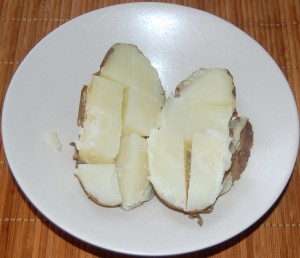
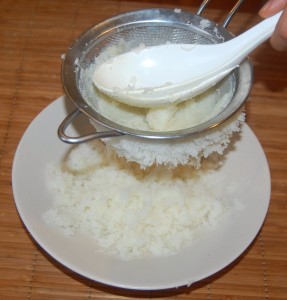
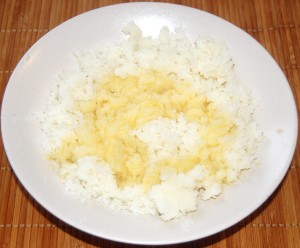

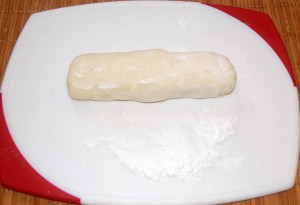
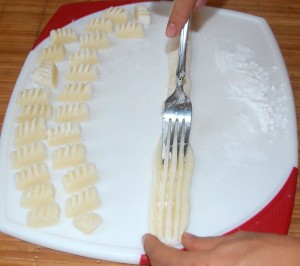
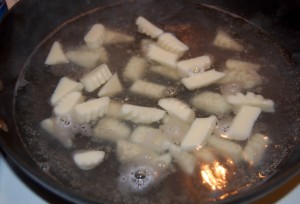
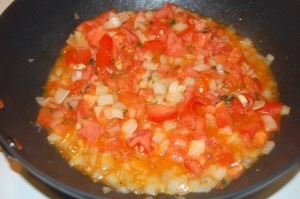

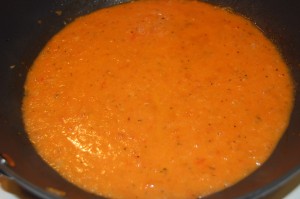
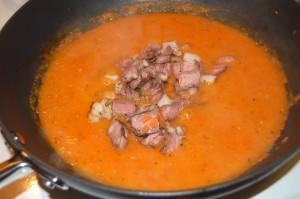
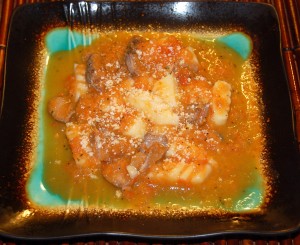
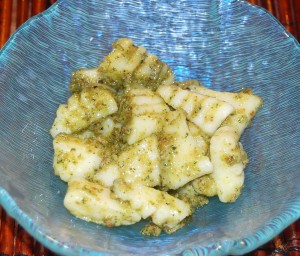
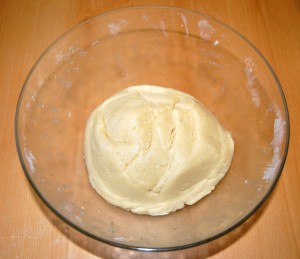
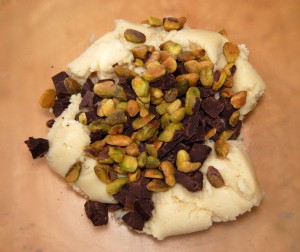
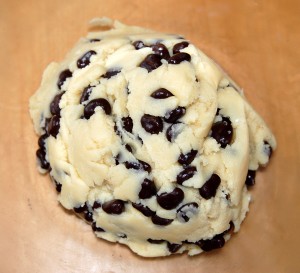
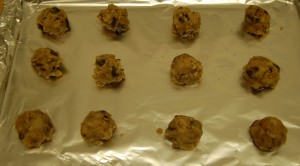
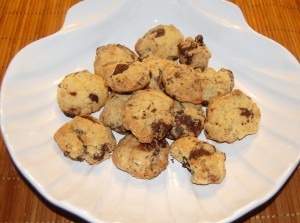
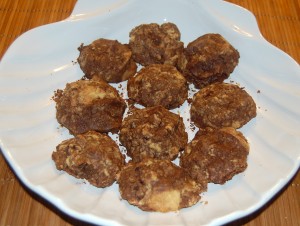
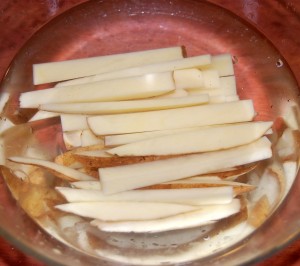
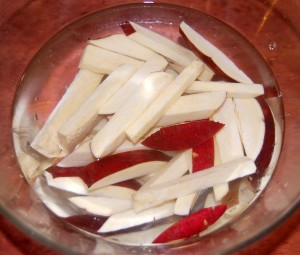
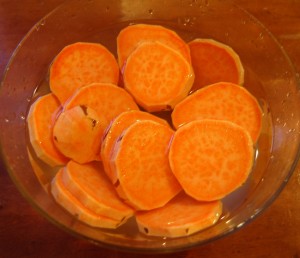
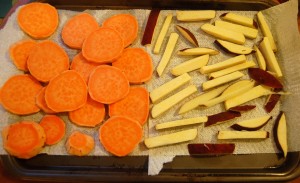
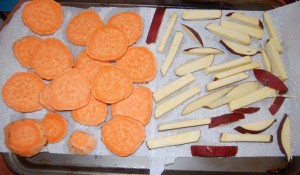
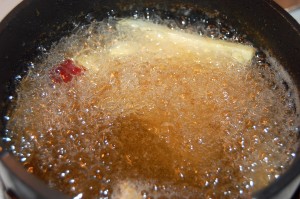
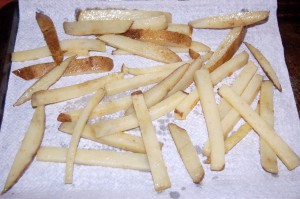

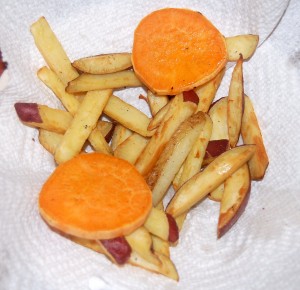
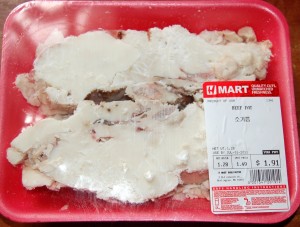
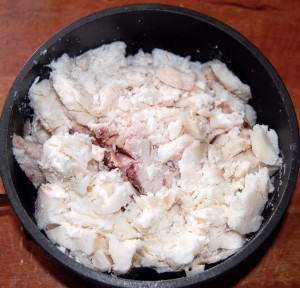
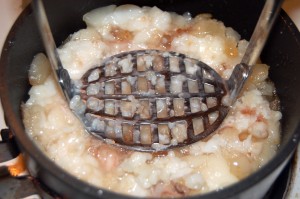
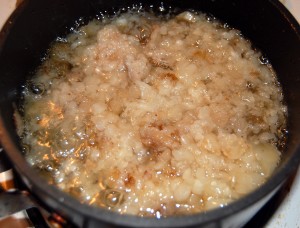
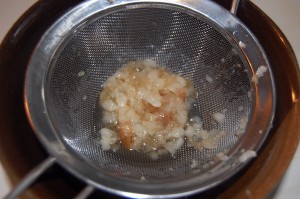
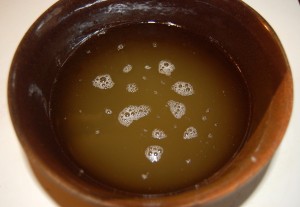
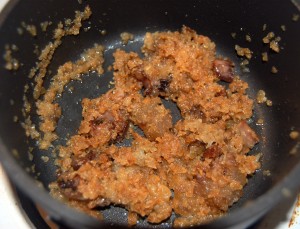




Recent Comments